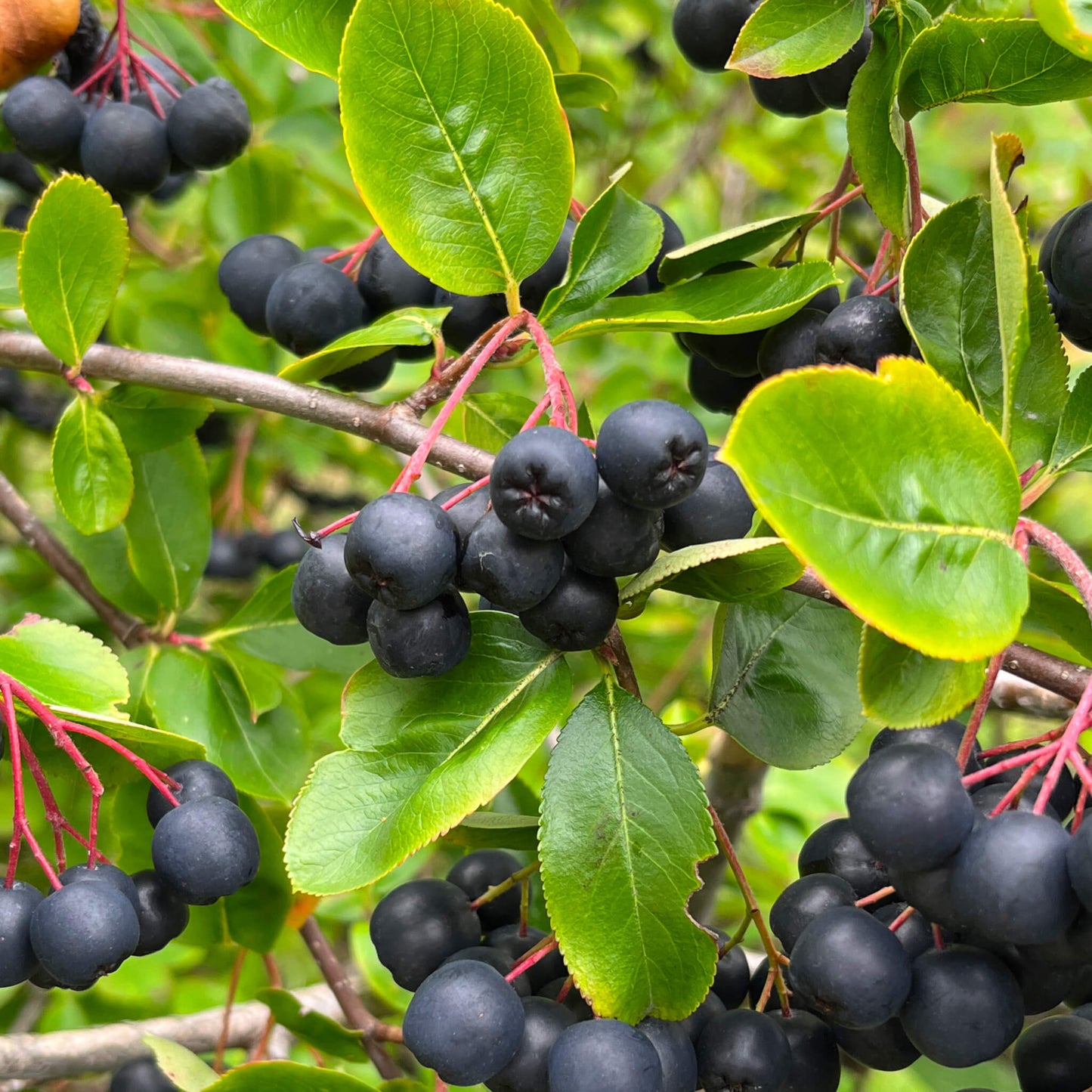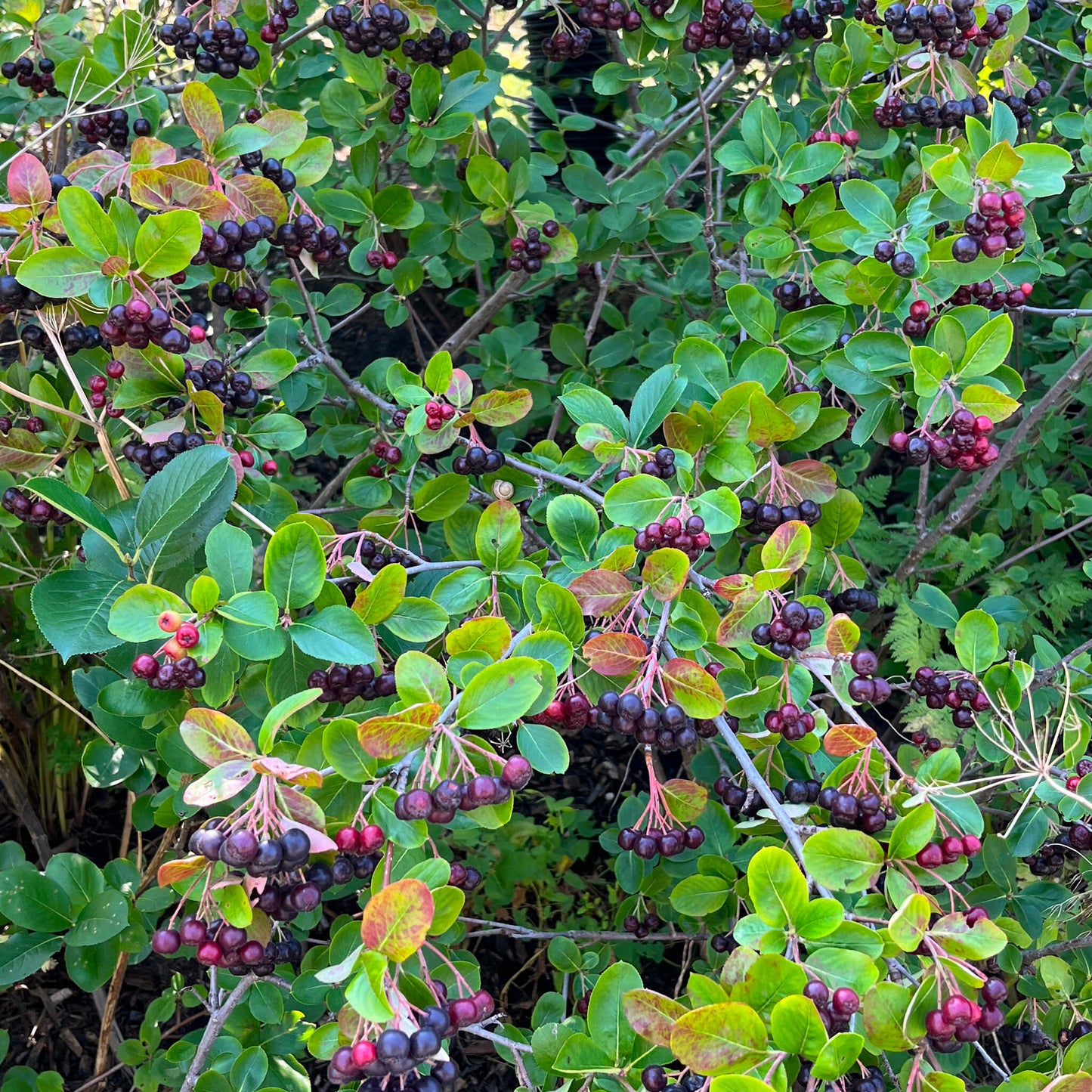This site is protected by hCaptcha and the hCaptcha Privacy Policy and Terms of Service apply.
For successful seedlings,
see the growing notes at the bottom of the page!
Black chokeberry (Aronia melanocarpa) is a decorative shrub valued for its visual appeal throughout the seasons. In spring, it is covered with small white flowers that form delicate clusters, attracting pollinators and adding a refreshing touch to the garden. In summer, these flowers give way to shiny black berries, grouped in clusters and clearly visible against the foliage. The leaves transition in the fall to a festival of colours, showcasing vibrant shades of red, orange, and purple, creating a stunning autumn display. The berries often remain on the branches long after the leaves have fallen, sometimes even into winter, bringing an elegant touch to the late season. The black chokeberry can reach a height of 1.5 metres, and its compact form makes it an excellent choice for landscaped gardens or diverse hedges.
Medicinal and Culinary Uses
Black chokeberries are renowned for their exceptional antioxidant content, surpassing that of many other fruits. They are also rich in vitamins C, E, and minerals, making them a highly nutritious food. While their taste is slightly bitter and astringent when consumed raw, they can be transformed into jams, jellies, syrups, or even added to smoothies to enhance the flavour and health benefits of the blends. Dried berries can also be incorporated into granolas or baked goods. In herbal medicine, black chokeberries are believed to help boost the immune system and reduce inflammation due to their high concentration of anthocyanins.
Ecological Role
Black chokeberry plays a valuable role in the ecosystem by providing a food source for various birds and small mammals that feed on its berries during fall and winter. It also attracts bees and other pollinators with its spring flowers, thereby contributing to the pollination of other plants in its environment. In addition to being cold and drought-resistant once established, black chokeberry adapts to a variety of soil conditions, although it prefers moist, well-drained environments. With its dense foliage, it helps prevent soil erosion while adding rich biodiversity to any natural garden or landscape design.
Black chokeberry seeds require cold stratification to ensure germination. See the cultivation notes below for more details.
Akène cannot assume any responsibility for the use of plants for therapeutic purposes. Always seek advice from a professional before using a medicinal or edible plant.
Sowing and Growing
Technical Details
Seeds per packet: 100
Family: Rosaceae
Scientific name: Aronia melanocarpa
Life cycle: Perennial
Hardiness zone: 3
Soil type: Sandy to silty
Soil moisture level: Medium
Soil - additional attributes: Acid
Light: Sun, partial shade
Blooming: May
Spacing: 100 cm
Height: 150 cm
Deer resistance: Low
Stratification: 60 days
Scarification: Soaking
Germination time: 20 to 30 days
Sowing depth: 3 mm


